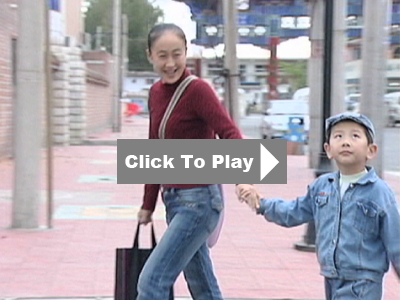I had trouble locating the full text of the 1900 Mental Patient Custody Act in Japan. Here it is below for mostly my purposes. The original was here (http://www.geocities.jp/nakanolib/hou/hm33-38.htm) but like all things on the web, I don't want to count on it still being there.
精神病者監護法(明治33年法律第38号)
第一条 精神病者ハ其ノ後見人配偶者四親等内ノ親族又ハ戸主ニ於テ之ヲ監護スルノ義務ヲ負フ但シ民法第九百八条ニ依リ後見人タルコトヲ得サル者ハ此ノ限ニ在ラス
2 監護義務者数人アル場合ニ於テ其ノ義務ヲ履行スヘキ者ノ順位ハ左ノ如シ但シ監護義務者相互ノ同意ヲ以テ順位ヲ変更スルコトヲ得
第一 後見人
第二 配偶者
第三 親権ヲ行フ父又ハ母
第四 戸主
第五 前各号ニ掲ケタル者ニ非サル四親等内ノ親族中ヨリ親族会ノ選任シタル者
第二条 監護義務者ニ非サレハ精神病者ヲ監置スルコトヲ得ス
第三条 精神病者ヲ監置セムトスルトキハ行政庁ノ許可ヲ受クヘシ但シ急迫ノ事情アルトキハ仮リニ之ヲ監置スルコトヲ得此ノ場合ニ於テハ二十四時間内ニ行政庁ニ届出ヘシ
2 前項仮監置ノ期間ハ七日ヲ超ユルコトヲ得ス
3 行政庁ノ許可ヲ受ケテ監置シタル精神病者ノ監置ヲ廃止シタル後三箇年内ニ更ニ之ヲ監置セムトスルトキ又ハ民法第九百二十二条ニ依リ禁治産者ヲ監置セムトスルトキハ行政庁ニ届出ヘシ
第四条 精神病者ノ監置ノ方法又ハ場所ヲ変更シタルトキハ二十四時間内ニ行政庁ニ届出ヘシ
第五条 監置シタル精神病者治癒シ死亡シ若ハ行方不明ト為リタルトキ又ハ其ノ監置ヲ廃止シタルトキハ七日内ニ行政庁ニ届出ヘシ
第六条 精神病者ヲ監置スルノ必要アルモ監護義務者ナキ場合又ハ監護義務者其ノ義務ヲ履行スルコト能ハサル事由アルトキハ精神病者ノ住所地、住所地ナキトキ又ハ不明ナルトキハ所在地市区町村長ハ勅令ノ定ムル所ニ従ヒ之ヲ監護スヘシ
第七条 行政庁ハ精神病者ノ監護ニ関シ必要ト認ムルトキハ監置ノ許可ヲ取消シ監置ノ廃止ヲ命シ又ハ監置ノ方法若ハ場所ノ変更ヲ命スルコトヲ得
2 監置ノ許可ヲ取消サレ又ハ其ノ廃止ヲ命セラレタル者監置ヲ廃止セサルトキハ行政庁ハ直接ニ監置ヲ廃止スルコトヲ得
第八条 精神病者監置ノ必要アルトキ又ハ監置不適当ト認ムルトキハ行政庁ハ第一条第二項ノ順位ニ拘ラス監護義務者ヲ指定シ之カ監置ヲ命スルコトヲ得但シ急迫ノ事情アルトキハ行政庁ハ仮リニ其ノ精神病者ヲ監置スルコトヲ得此ノ場合ニ於テハ第三条第二項ノ規定ヲ準用ス
2 市区町村長ニ於テ監護スル精神病者ノ監護義務者ヲ発見シ又ハ監護義務者其ノ義務ヲ履行シ得ルニ至リタルトキ亦前項ニ同シ
3 本条ニ依リ精神病者ノ監置ヲ命セラレタル監護義務者其ノ命ヲ履行セサルトキハ第六条ノ例ニ依リ市区町村長ニ於テ之ヲ監護スヘシ
4 本条ニ依リ監護義務者ノ監置シタル精神病者ニ関シテハ行政庁ノ許可ヲ受クルニ非サレハ其ノ監置ヲ廃止シ又ハ監置ノ方法若ハ場所ヲ変更スルコトヲ得ス
第九条 私宅監置室、公私立精神病院及公私立病院ノ精神病室ハ行政庁ノ許可ヲ受クルニ非サレハ之ヲ使用スルコトヲ得ス
2 私宅監置室、公私立精神病院及公私立病院ノ精神病室ノ構造設備及管理方法ニ関スル規定ハ命令ヲ以テ之ヲ定ム
第十条 監護ニ要シタル費用ハ被監護者ノ負担トシ被監護者ヨリ弁償ヲ得サルトキハ其ノ扶養義務者ノ負担トス
2 市町村長ニ於テ監護スル場合ニ於テ之カ為要スル費用ノ支弁方法及其ノ追徴方法ハ行旅病人及行旅死亡人取扱法ノ規定ヲ準用ス
第十一条 行政庁ハ必要ト認ムルトキハ其ノ指定シタル医師ヲシテ精神病者ノ検診ヲ為サシメ又ハ官吏若ハ医師ヲシテ精神病者ニ関シ必要ナル尋問ヲ為サシメ又ハ精神病者在ル家宅病院其ノ他ノ場所ニ臨検セシムルコトヲ得
第十二条 本法又ハ本法ニ基ツキテ発スル命令ノ執行ニ関シ行政庁ノ違法処分ニ由リ権利ヲ傷害セラレタリトスル者ハ行政裁判所ニ出訴スルコトヲ得
第十三条 本法又ハ本法ニ基ツキテ発スル命令ノ執行ニ関スル行政庁ノ処分ニ不服アル者ハ訴願ヲ提起スルコトヲ得
第十四条 官吏公吏又ハ行政庁ノ命ヲ受ケテ公務ヲ行フ医師本法ノ執行ニ関シ不正ノ所為ヲ為シタル者ハ三年以下ノ重禁錮ニ処シ百円以下ノ罰金ヲ附加ス
第十五条 官吏公吏又ハ行政庁ノ命ヲ受ケテ公務ヲ行フ医師本法ノ執行ニ関シ賄賂ヲ収受シ又ハ之ヲ聴許シタル者ハ刑法第二百八十六条ノ例ニ照ラシテ処断ス
第十六条 左ニ掲クル者ハ一年以下ノ重禁錮ニ処シ百円以下ノ罰金ヲ附加ス
一 詐偽ノ所為ヲ以テ行政庁ノ許可ヲ受ケ若ハ虚偽ノ届出ヲ為シ精神病者ヲ監置シ又ハ拘束ノ程度ヲ加重シタル者
二 医師精神病者ノ診断書ニ虚偽ノ事実ヲ記載シ又ハ自ラ診断セスシテ診断書ヲ授与シタル者
2 前項第一号ノ場合ニ於テハ監置又ハ拘束ノ日数十日ヲ過クル毎ニ一等ヲ加フ
第十七条 左ニ掲クル者ハ二月以下ノ重禁錮ニ処シ二十円以下ノ罰金ヲ附加シ又ハ百円以下ノ罰金ニ処ス但シ監置又ハ拘束ノ日数十日ヲ過クル毎ニ一等ヲ加フ
一 許可ヲ受ケス又ハ届出ヲ為サス若ハ命ヲ受ケスシテ精神病者トシテ人ヲ監置シタル者
二 禁治産ノ宣告又ハ監置ノ許可ヲ取消サレ又ハ監置ノ廃止ヲ命セラレ若ハ仮監置ノ期間ヲ経過シタル後監置ヲ廃止セサル者
三 許可ヲ受ケ又ハ届出ヲ為シ若ハ命ヲ受ケタル程度ヲ超エテ精神病者ヲ拘束シタル者
第十八条 左ニ掲クル者ハ一月以下ノ重禁錮ニ処シ十円以下ノ罰金ヲ附加シ又ハ五十円以下ノ罰金ニ処ス
一 精神病者ノ監置ニ関シ虚偽ノ事実ヲ記載シタル願届其ノ他ノ書類ヲ行政庁ニ提出シタル者
二 監護義務ヲ履行スヘキ順位ニ在ラサル者ニシテ許可ヲ受ケス又ハ命ニ依ルニ非スシテ監置ヲ廃止シ又ハ監置ノ方法若ハ場所ヲ変更シタル者
三 官吏又ハ行政庁ノ指定シタル医師ノ臨検若ハ検診ヲ拒ミ又ハ其ノ尋問ニ対シ答弁ヲ為サス若ハ虚偽ノ答弁ヲ為シタル者
第十九条 左ニ掲クル者ハ百円以下ノ罰金二処ス
一 監置ノ方法若ハ場所ノ変更ヲ命セラレ其ノ命ヲ履行セサル者
二 監護義務者精神病者ノ監置ヲ命セラレ其ノ命ヲ履行セサル者
三 第八条第四項及第九条第一項ニ違背シタル者
第二十条 第四条及第五条ニ違背シタル者ハ十円以下ノ罰金二処ス
附 則
第二十一条 本法ハ明治三十三年七月一日ヨリ之ヲ施行ス
2 本法施行前ヨリ精神病者ヲ監置シタル者ニシテ仍之ヲ継続セムトスルトキハ本法施行ノ日ヨリ二箇月内ニ第三条ノ許可ヲ受ケ又ハ届出ヲ為スヘシ
3 第三条ノ許可ヲ受ケス又ハ届出ヲ為サスシテ前項ノ期間ヲ経過シタル後監置ヲ廃止セサル者ハ第十七条ノ例ニ照シテ処断ス
4 本法中市区町村長ニ属スル職務ハ市制区制町村制ヲ施行セサル地ニ在リテハ市区町村長二準スヘキ者之ヲ行フ
第二十二条 外国人タル精神病者ノ監護ニ関シ別段ノ規定ヲ要スルモノハ勅令ヲ以テ之ヲ定ム
第二十三条 人事訴訟手続法第五十条又ハ第六十条ニ依リ裁判所ニ於テ精神病者ノ監護ニ付必要ナル処分ヲ命シタル場合ニ関シテハ本法ノ規定ヲ適用セス
▲
制作者註
この法律は、明治33年3月10日に公布され、同7月1日より施行された。上掲のものは、昭和22年法律第223号による改正前の制定時の条文である。
この法律は、昭和22年法律第223号および昭和23年法律第260号による改正がなされた。
精神衛生法(昭和25年法律第123号)附則2項により、本法は昭和25年5月1日をもって廃止された。なお、「精神衛生法」は「精神保健法」に改題された後、現在はさらに「精神保健及び精神障害者福祉に関する法律」に改題されている。
 But my FCP wouldn't run. Strange. I decided to try to reinstall it, but the installer wouldn't work. A quick search of the internets revealed:
But my FCP wouldn't run. Strange. I decided to try to reinstall it, but the installer wouldn't work. A quick search of the internets revealed:








 CreateSpace is a company that allows you to publish your own DVDs, CDs, and books. They were bought out by Amazon and so Amazon can also handle the distribution of your materials. The royalty rates are quite generous, especially comparison to mainstream publishing and distribution companies.
CreateSpace is a company that allows you to publish your own DVDs, CDs, and books. They were bought out by Amazon and so Amazon can also handle the distribution of your materials. The royalty rates are quite generous, especially comparison to mainstream publishing and distribution companies.


 Dr. Emiko Ohnuki-Tierney at the University of Wisconsin has been digitizing some very old Japanese texts about the Ainu first people. The real benefit is that there are wonderful drawings of the unique clothing that the Ainu wore, which indicated which clan they belonged to.
Dr. Emiko Ohnuki-Tierney at the University of Wisconsin has been digitizing some very old Japanese texts about the Ainu first people. The real benefit is that there are wonderful drawings of the unique clothing that the Ainu wore, which indicated which clan they belonged to.

 One of the more interesting panels at the Association for Asian Studies meeting Chicago was the
One of the more interesting panels at the Association for Asian Studies meeting Chicago was the 
 In case you didn't know, AT&T will often give you discounted / corporate rates on their monthly service charge if you are an employee of some companies. And most larger schools have these negotiated rates for their students, faculty, staff, and other affiliates.
In case you didn't know, AT&T will often give you discounted / corporate rates on their monthly service charge if you are an employee of some companies. And most larger schools have these negotiated rates for their students, faculty, staff, and other affiliates.


